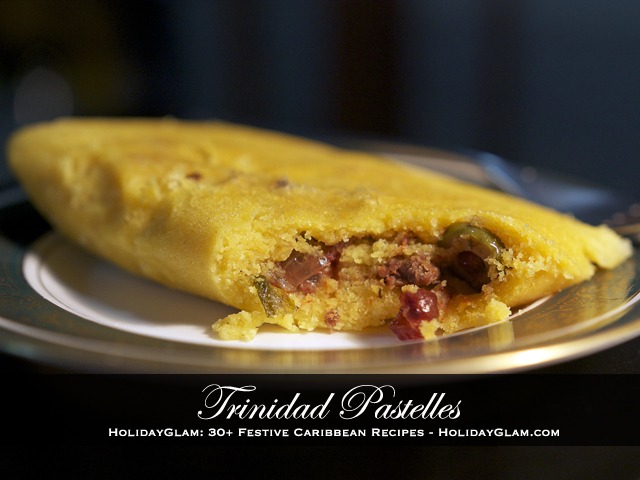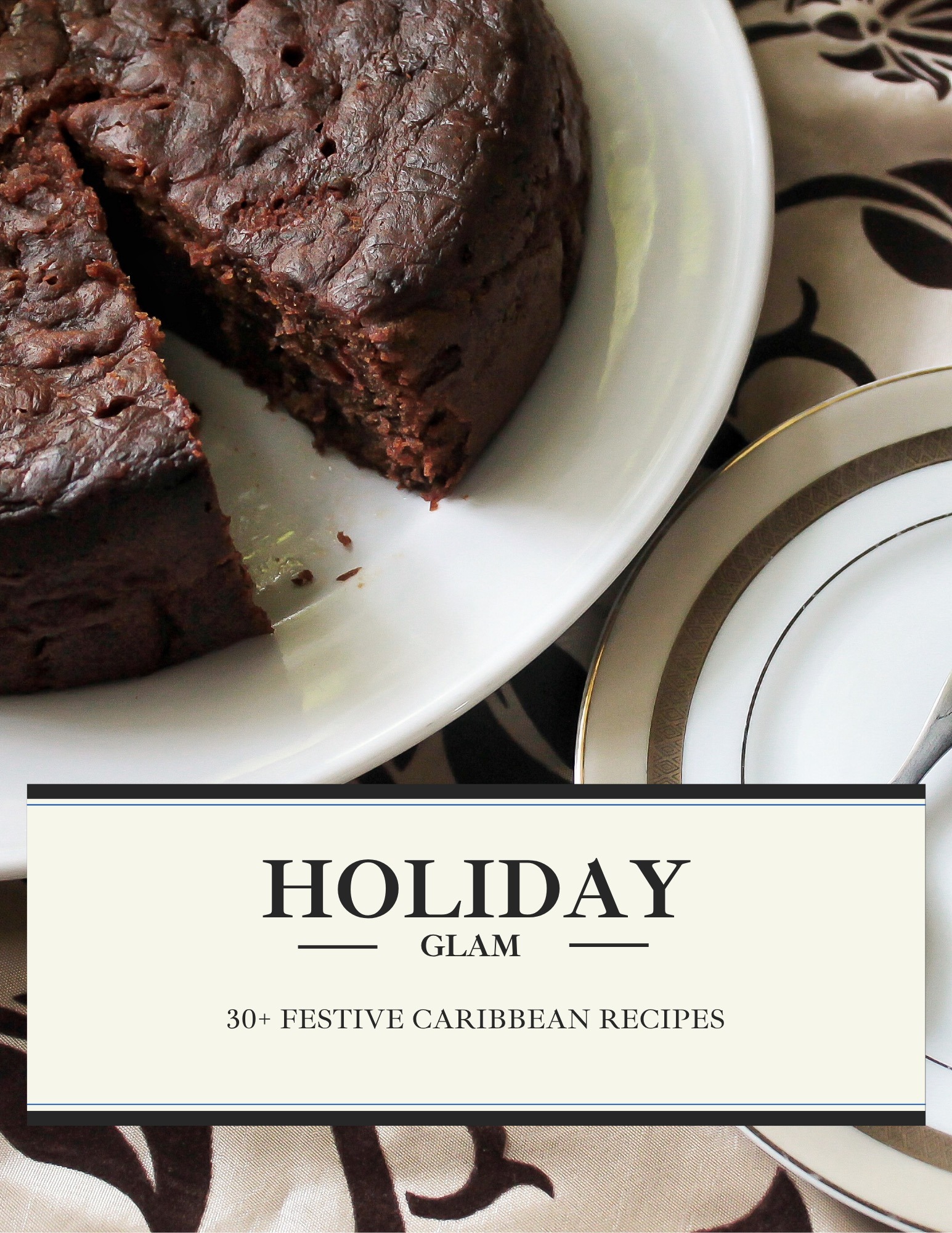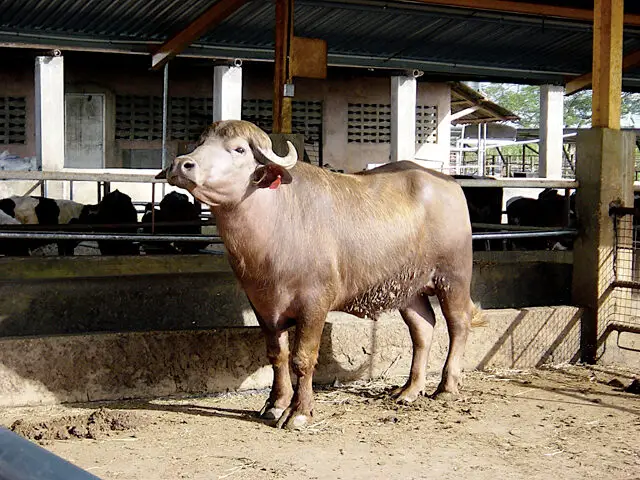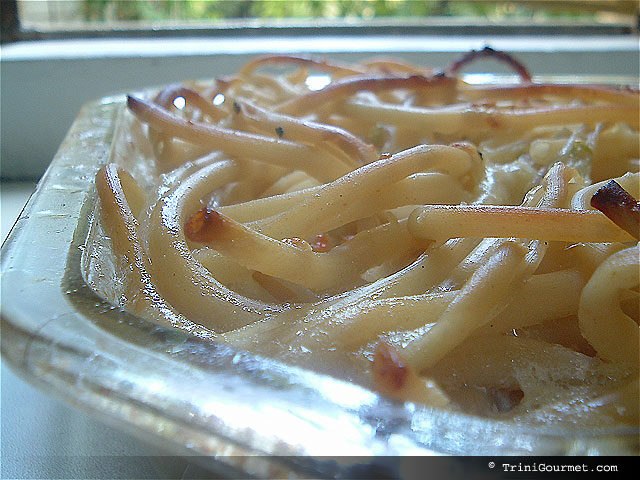Trinidad Pastelles (recipe) now with Delicious Vegan Option!

A Christmas delight, Trinidad pastelles are a steamed cornmeal pie wrapped in banana leaves and filled with stewed meat, olives, and raisins. I’ve been told that they are very similar to Latin American tamales, and indeed Venezualan foodblogger Tomasnomas has a link to the exact same dish, referring to it on his blog as Tamal Navideño. In recent years I have also seen Venezuelan migrants refer to the Trinidad Pastelle as a hallaca. It makes me so happy that this dish is yet another cultural tie that our geographic neighbour shares with us, despite our language differences 🙂
On this page you will find two approaches towards pastelles. Firstly there is the traditional meat-based recipe for pastelles which comes from Wendy Rahamut, author of Modern Caribbean Cuisine and Caribbean Flavors
, the second is decidedly non-traditional yet and was developed in response to the many requests I have gotten through the years for a vegetarian alternative.
Up until now most of the local attempts at a meat-free pastelle have used soya mince or lentils as fillings and, at the risk of causing offense, I have usually found them rather underwhelming. We’re a creative people, surely we could come up with something exciting, something that would make meat-eaters want seconds for themselves, something a little more Caribbean Glam! Yet I myself, wasn’t sure what direction to go in.
It wasn’t until I received a copy of Taymer Mason‘s “Caribbean Vegan” that I realized what the missing link would be. In her book, Taymer takes on that most meat-centric of traditional Caribbean dishes, black pudding. Recreating something that most people would think of as impossible to do with nothing but plant based ingredients. Her secret weapon? Sweet potato! Shocked? So was I. When combined with browning, the potato (grated finely) takes on the color and texture of high quality ground meat. The bitterness of the browning turns the potato into an ingredient more savory than sweet, and heightens the silky feel. I knew that this approach would be the one to create a vegan pastelle filling that would both amaze and delight. Because the base of this recipe is naturally milder in profile it needs to be more strongly seasoned. Feel free to adjust the balance and sweet and sour to suit your own preferences, in my original testings I omitted capers and used more raisins than olives. Again, shift the ratios to suit your own tastes. To date my taste testers have all given this recipe two hearty thumbs up and none were able to identify the ‘secret ingredient’. It sure was fun to see them try though 🙂 I hope you enjoy it as well!
Note: I often get asked about fish pastelles. For fish pastelles I prefer working with steamed and shredded mild white fish. Tuna is a common choice but I find that it often imparts a dry, harsh quality to the pastelle. Taking the extra time to steam and shred white fish lends to a much moister and more delicately flavoured result. It can then be combined with the remaining ingredients of the meat-based filling.
Also, for those with problems with the cornmeal coming together. It’s very important to use hot water otherwise the cornmeal will not swell adequately. The original recipe called for lukewarm, but I have modified it to reflect my own practice. 😉


Ingredients
Method
- In a food processor or by hand, combine cornmeal with butter and salt.
- Add water and process to make a soft, pliable dough.
- Divide the dough into 12 balls. Cover with a damp cloth to prevent drying.
- Place one piece of dough on a greased fig leaf and press into an eight-inch square.
- Spoon two tablespoons of filling onto the middle of the dough and fold and seal pastelles.
- Wrap in fig leaf and tie into a neat package. (you can also use foil)
- Steam pastelles for 45 minutes until cooked.
- Combine beef with chicken. Add salt and black pepper.
- Add a quarter-cup chopped chives and one tablespoon thyme.
- In a large saute pan heat olive oil.
- Add onion and garlic. Saute until fragrant.
- Add pimento peppers, remaining chive, pepper and thyme.
- Add meat and cook until brown
- Add tomato sauce, cover and simmer for about 15 minutes.
- Add raisins, capers and olives and stir to combine.
- Cook for about five minutes more. Taste and adjust seasoning
- Add two tablespoons fresh thyme and stir to combine.
- Remove from heat and cool.
- Prepare dough as in recipe above and fill and fold pastelles as indicated.
Notes

Discover over 30 classic and modern Caribbean recipes crafted to help you slow down, savour the seasons, and cook with confidence. From pastelles and black cake to bright Divali sweets, this collection brings warmth, joy and a touch of glamour to every gathering

Ingredients
Method
- In a food processor or by hand, combine cornmeal with butter and salt.
- Add water and process to make a soft, pliable dough.
- Divide the dough into 12 balls. Cover with a damp cloth to prevent drying.
- Place one piece of dough on a greased fig leaf and press into an eight-inch square.
- Spoon two tablespoons of filling onto the middle of the dough and fold and seal pastelles.
- Wrap in fig leaf and tie into a neat package. (you can also use foil)
- Steam pastelles for 45 minutes until cooked.
- Combine first 8 ingredients (sweet potato through salt) in large mixing bowl.
- Heat olive oil over medium heat
- Add potato mixture, sauté for 5 minutes.
- Turn off heat
- Add water, margarine, browning, brown sugar and tomato paste.
- Stir to combine.
- Add raisins and olives.
- Stir to combine.
- Taste and adjust seasonings (especially salt and pepper) to suit.
- Proceed to fill pastelles as above 🙂





